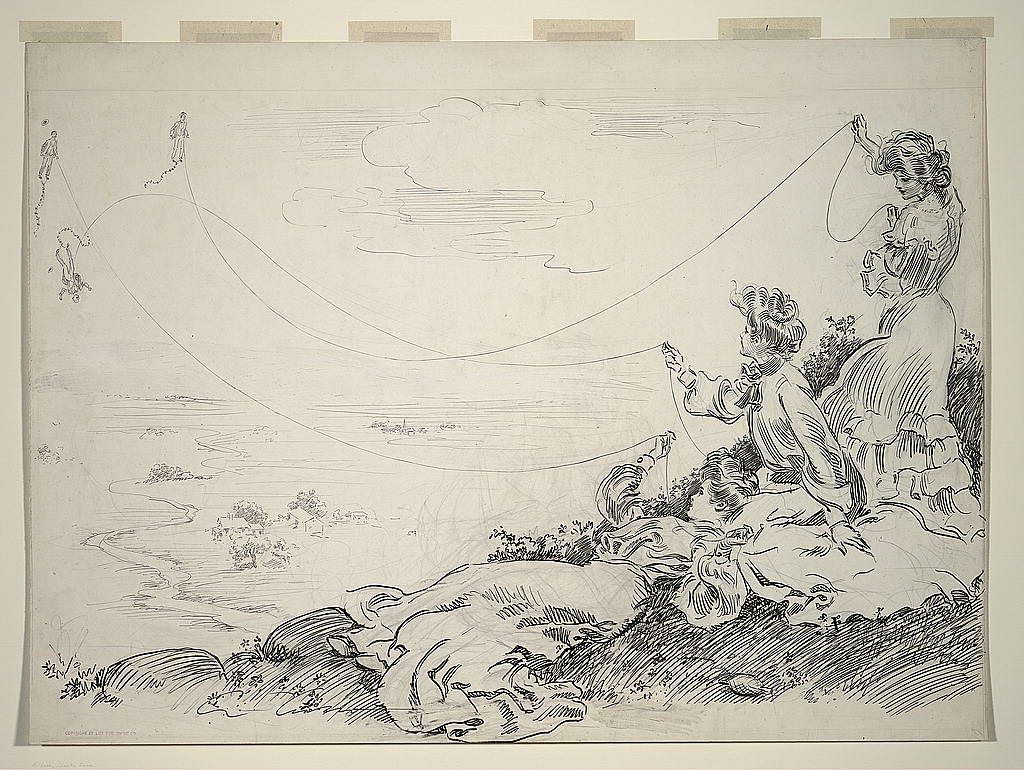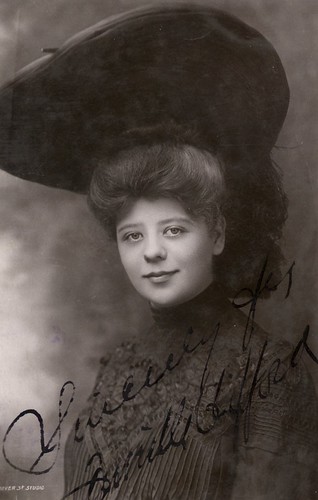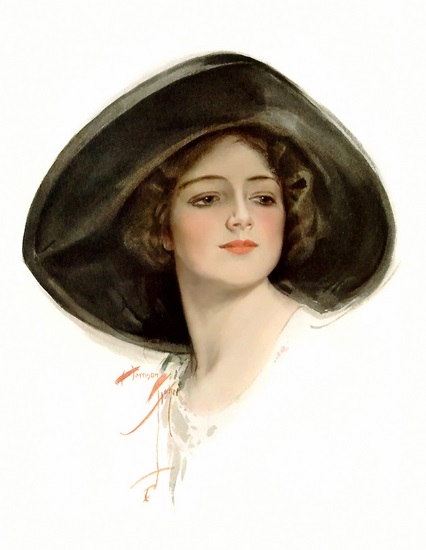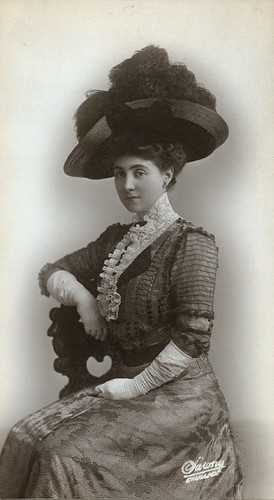
This interesting photograph comes from the National Photo collection in the LC Prints and Photos division. Click to view full size. The LC curator says it has the title "H.E.F. in den, 2227 Nichols" and was taken between 1910 and 1925. The Shorpy blog says it shows Herbert E. French, the owner of the photo company and the author dates it ca. 1920. Nichols Avenue is now Martin Luther King Avenue SE, Washington, DC. The address 2227 is on MLK Av. between W and 13th Sts.

This detail shows a photo mounted on what seems to be headboard of a bed on the floor behind French. The photo seems to have been taken in the same office (the curtains are the same). It may show French trying to learn to play the mandolin.


French appears to have liked to make playing cards out of photos. A commenter on the Shorpy blog connects this with his (obvious) love of illustrations showing men and women ca. 1900-1914.

The pattern on this gauzy curtain is very handsome. What's the style? Is it Art Nouveau?

This a detail from French's desk chair. A commenter says it's Roycroft work. In general the commenters agree that it looks uncomfortable.

This says
"Man is made of dust,
Dust Settles
Are You a Man?"

This motto, over the entry door, says "Opportunity knocks daily
Usually in the morning."

This says
You should be ve-ry careful, you know,
you might get interested
in your work, and
let your pipe go out.
-- James McNeill Whistler


A glance at the walls shows that French was fond of drawings by Charles Dana Gibson (and his ilk). These two cushions, each found on one of the window seats, show that he liked the subjects and style of this artist well enough to acquire more than just prints.

A commenter shows the original of this poster. It's an advertisement for hat bands.

The be-ribboned object looks like a walking stick or maybe a large crop or swagger stick.

It's clear French was fond of dogs. The white object is probably something he uses as a paperweight. It looks like a socket for an electric light bulb.

There are many interesting things on the desk. Commenters wonder what the flexible tubing is for: a nautical speaking tube, a hose, a humorous found object? There's tobacco, ink, and related stuff.

Comments suggest this is a naval weapon, a harpoon gun, or a navigational device for ships. I suggest the latter. It appears the operator looks through the left-side narrow end of the telescope-like tube.

Commenters say this is a walking stick made to look like a snake, or a rubber snake, or just a snake replica of some kind. One commenter includes a better detail than mine. It's a polished wooden snake.
You can't miss the abundance of illustrations mounted all over French's office. They show a version of feminine beauty that was popular early in the 20th-century as well as the sense of humor of the times. It's all pretty solidly upper middle-class and all of the style associated with Charles Gibson. The period was supposed to be a golden age for the upper classes, La Belle Époque in fashion and high culture. LC has a collection of Gibson drawings that bears out this observation. Here is a representative sample from that collection:

Caption: "I want you to like me, Jose : I want to be able to like you : I shall have need of friends, she said half to herself." ca. 1911

No caption. Early 20th c.

Caption: "The weaker sex. II." Early 20th c.

No caption. Early 20th c.

No caption. Early 20th c.

Caption: Molly Bawn. 1910 or 1911. This is an illustration for Margaret Hamilton's novel Molly Bawn.

Caption: "Summer sports." ca. 1904

Caption: "A 'quick change' -- for the rest of the afternoon. ca. 1901
The following images, from other sources, show the prevalence of the Gibson style at the time. These first ones show the big-hat style that French seemed particularly to admire.




This photo shows the wasp waist that he also seems to have favored.

These drawings are typical of the humor he seemed to enjoy.

Caption: "Accident to a young man with a weak heart."

Gibson, "One Difficulty of the Game: Keeping Your Eye on the Ball," from the magazine Americans, 1900.




No comments:
Post a Comment